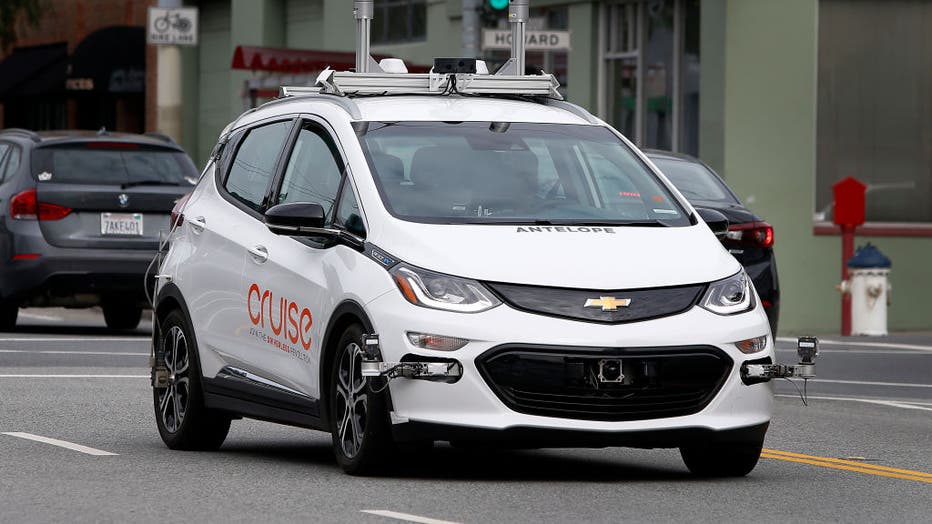Cruise says it's pausing driverless operations across all fleets to rebuild public trust
Cruise says its pausing driverless operations across all fleets to rebuild public trust
Cruise, the autonomous vehicle company that was suspended from operating in San Francisco this week, has now announced they are pausing driverless operations across all of its fleets in order to earn public trust.
SAN FRANCISCO - Cruise, the autonomous vehicle company that was suspended from operating in San Francisco this week, has now announced they are pausing driverless operations across all of its fleets in order to earn public trust.
The AV company has deployed fleets in San Francisco, Phoenix, Arizona and Austin and Houston, Texas. Now it appears those fleets have come to a halt.
On social media Cruise posted, "…we have decided to proactively pause driverless operations across all of our fleets while we take time to examine our processes, systems, and tools and reflect on how we can better operate in a way that will earn public trust. This isn't related to any new on-road incidents, and supervised AV operations will continue."

A self-driving car operated by Cruise rides on 11th Street in San Francisco, Calif. on Friday, March 10, 2017. The Department of Motor Vehicles is announcing proposed regulations for testing and deploying self-driving cars on public roadways. (Photo
On Tuesday, officials with California's Department of Motor Vehicles abruptly revoked the company's driverless permits effective immediately due to a risk to public safety. The DMV said Cruise's AVs were not safe for public operation.
Earlier this month, an AV from the company's fleet was involved in a hit-and-run collision in San Francisco, where a woman was struck by a driver who fled the scene. The female pedestrian was knocked into the AV's path and was dragged by the Cruise vehicle as it tried to maneuver to the side of the road, according to state investigators. Following the accident, Cruise shared footage with news outlets for their viewing purposes only. However, this week it was reported that Cruise failed to share the footage of the pedestrian being dragged with the DMV.
Cruise disputes that it withheld the video from the DMV.
The DMV maintains that Cruise misrepresented the safety of its fleet.
But the dragging of the pedestrian was just one high-profile incident.
Federal regulators had recently launched an investigation into Cruise because of possible deficiencies when it comes to pedestrian safety.
Cruise has been widely criticized by local politicians and top city officials, including San Francisco Fire Chief Jeanine Nicholson who said the AV fleet was, "not ready for prime time."
At the time, she was speaking to the California Public Utilities Commission when Cruise and Waymo, another AV company, were seeking regulatory approval to operate robotaxis in San Francisco last August. Both companies ended up gaining that approval. Waymo can still operate their robotaxi fleet, but for Cruise, that distinction was short-lived.
Nicholson had cited more than 50 examples of AVs disrupting the work of first responders and their emergency vehicles in an eight-month time period. The chief continued to criticize Cruise after they were approved by the CPUC. Over the summer, she said two Cruise vehicles hindered life-saving efforts in an emergency situation following a crash. The person who was struck later died from their injuries.
Mayor London Breed said this week that she embraces the technology as long as it is deployed responsibly. She didn't want to see the streets saturated with AVs if they're not necessarily ready.
The deployment of the AVs hasn't exactly been smooth. Activists notably figured out a simple-yet-effective way to manually disable the AV fleet of cars by placing traffic cones on their hoods. The group Safe Street Rebel claimed responsibility, saying they didn't want the streets of San Francisco and its population of pedestrians, cyclists and actual human drivers to be used as guinea pigs.
Cruise announced plans earlier this month to expand their driverless ridehail service to Japan by 2026 as part of a partnership with GM and Honda.
When their permit was revoked, Cruise said they "develop and deploy autonomous vehicles in an effort to save lives."

